The Best Traditional Food in 30 European Countries
Local flavor
Iconic European Food

If you’ve fantasized about eating your way through Europe, you’re not alone. From rich stews and dumplings in the Balkans, to seafood in the Mediterranean, to (of course) savory cheeses throughout, the continent is a foodie’s dream.
With each country, there is one dish that stands out as the most recognizable, most famed and most sought-after by visitors: the food staple that people think of when they think of the place. These dishes are not only delectable, but tell a story about the country’s history, people and traditions.
Join us as we travel through Europe’s gastronomical scene, one country and iconic food at a time. Fair warning: this article is best read when not on an empty stomach.
Austria – Strudel

Strudel — made of crisp dough with delicate layers — can actually have many different kinds of fillings. But the apple variety, which also often includes raisins, is by far the most beloved in Austria.
Order it like the locals by asking for an "Apfelstrudel." Enjoy with a topping of whipped cream or vanilla sauce, and get ready for the sugar high of your life.
Belgium – Waffles

Belgium is home to culinary favorites like Belgian chocolate and beer — but no dish is more iconic than the Belgian waffle.
While in North America, the Belgian waffle is often massive and drowning in syrup, the traditional version is actually a small street food. Eat this treat like it's meant to be enjoyed — sans forks, either plain or with a small helping of whipped cream and sliced berries on top.
Bulgaria – Soup

Soups can be found on pretty much every Bulgarian menu, and they’re anything but run-of-the-mill.
Try tarator, yogurt-base soup made of cucumbers, garlic, dill and sometimes walnuts, best enjoyed on a scorching hot summer day; or sip shkembe chorba, a spicy tripe soup said to cure a hangover.
Croatia – Black Risotto

Black risotto is popular along Croatia's coast, and features a tasty mix of cuttlefish or squid, olive oil, garlic, red wine and squid ink. Called "crni rižot" by Croatians, it is known for turning people's teeth black.
Other beloved regional dishes include pasticada, a mix of tender beer and gnocchi that's a staple in the region of Dalmatia.
No matter where you go in Croatia, expect to find a lot of olive oil; there's a reason it's referred to (accurately) as "Mediterranean liquid gold.”
Cyprus – Halloumi Cheese
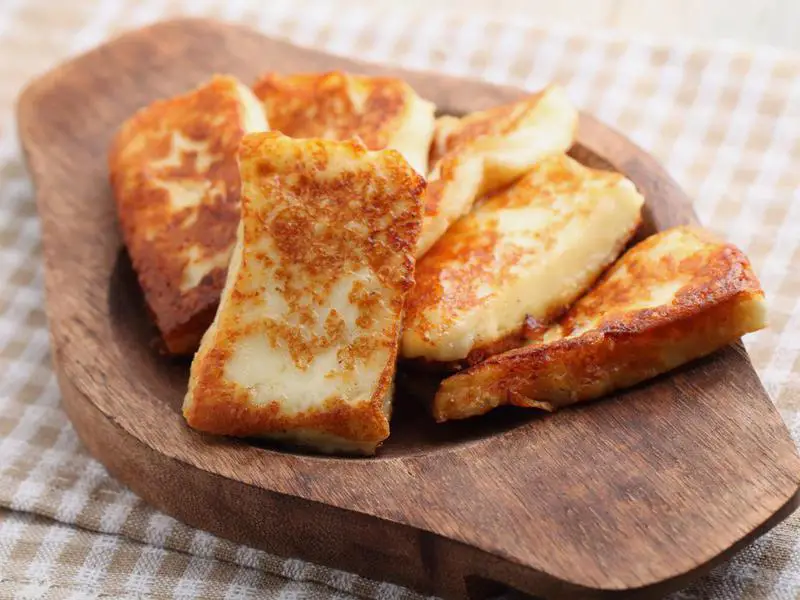
Widely popular in the Middle East and Greece, it's believed halloumi cheese actually originated in Cyprus centuries ago (the earliest descriptions of the cheese date back to the 16th century).
A mixture of goat and sheep milk give halloumi its signature taste and texture, making this a cheese ideal for grilling rather than melting. During the summer months, Cypriots enjoy halloumi with fresh watermelon for a refreshing snack.
Czech Republic – Bread 'Dumplings'

Forget the Asian-style dumplings that may come to mind: “dumplings” in the Czech Republic actually resemble bread loaves, and are made from boiled flour, yeast, egg, salt and milk.
Eat this dish the traditional way by dipping it in goulash.
Denmark – Smørrebrød
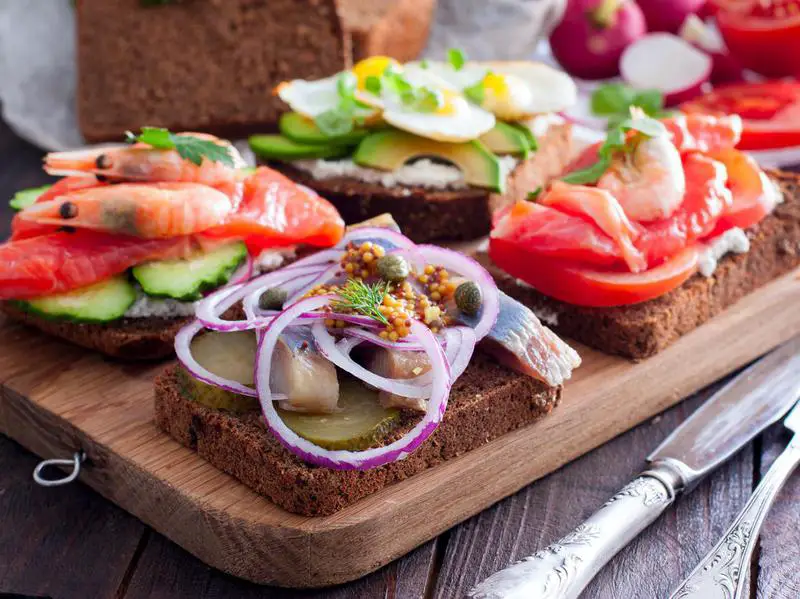
These open-faced sandwiches combine buttered rye bread with some variation of eggs, cheese, meat and/or fish. From that basic template, innovation flourishes; smørrebrød may be topped with everything from roast beef and horseradish to shrimp and red caviar.
Eat smørrebrød the way the Danish do: with a fork and knife, the better to keep the ingredients in tact.
Estonia – Rye Bread

Estonians have a love affair with their breads, and rye is the most popular variety of all. The bread has been produced in the country for over 1,000 years, and is still found regularly at local restaurants and bakeries.
Estonians will tell you that the bread tastes best when it’s warmed, then topped with a dollop of salted butter or Baltic herring.
Finland – Karelian Pies

Like many of the staples on this list, karelian pies are deceptively simple, featuring a thin crust (typically made with rye flour) stuffed with potatoes, rice or carrots. Try one with egg butter — a mix of butter and hard-boiled eggs — spread on top.
And don’t forget to learn to call this by its Finnish name: "Karjalanpiirakka."
France – Croissants

The croissant is as indelible to French culture as the Eiffel Tower. And little wonder: the pastry, which is enjoyed any time of day, is flakery, buttery perfection.
Fun fact: the treat actually got its start in Austria, before making its way to France and becoming wildly popular there. France is also where the dish got the name we all know it by; in French, “crescent,” the shape of the pastry, translates to “croissant.”
Like many countries on the list, France is also home to a popular soup: soupe à l’oignon, made with onions, beef stock, croutons and (yum) melted cheese. It's well-known elsewhere by its English name, "French onion soup."
Germany – Pretzels
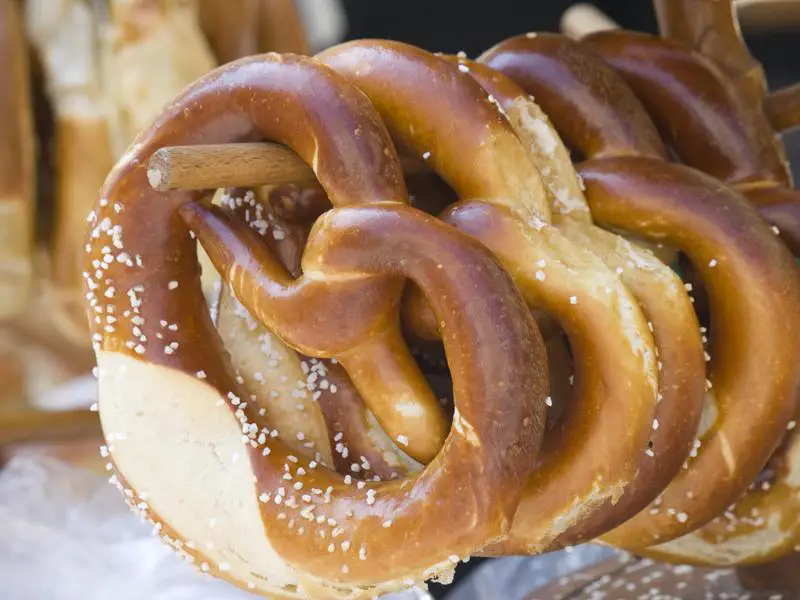
Pretzels may actually have been invented by European monks in the Middle Ages — but for centuries, they’ve been most closely associated with Germany.
Today, German bakeries, restaurants and beer halls serve them topped with everything from ham and cheese to pumpkin seed. The best versions feature a crispy crust and chewy dough inside.
Other German favorites include spaetzle, a type of pasta made from fresh eggs, and a variety of sausages, including bratwurst (made from minced pork and beef) and blutworst (made from blood sausage).
No matter what traditional food you opt for, make sure to wash it down with another German classic — a boot of ale (aka "das boot").
Greece – Gyros

If there’s a better hand-held street food than the gyro — flatbread stuffed with rotisserie-grilled meat, then topped with creamy tzatziki sauce — we don’t know what it is. The dish originated in Greece, and in more recent years has become popular across the world, including in the U.S.
Outside its home country, "gyro" is one of the most consistently mispronounced foods on the planet. The correct way to say it? Yee-roh.
Hungary – Goulash
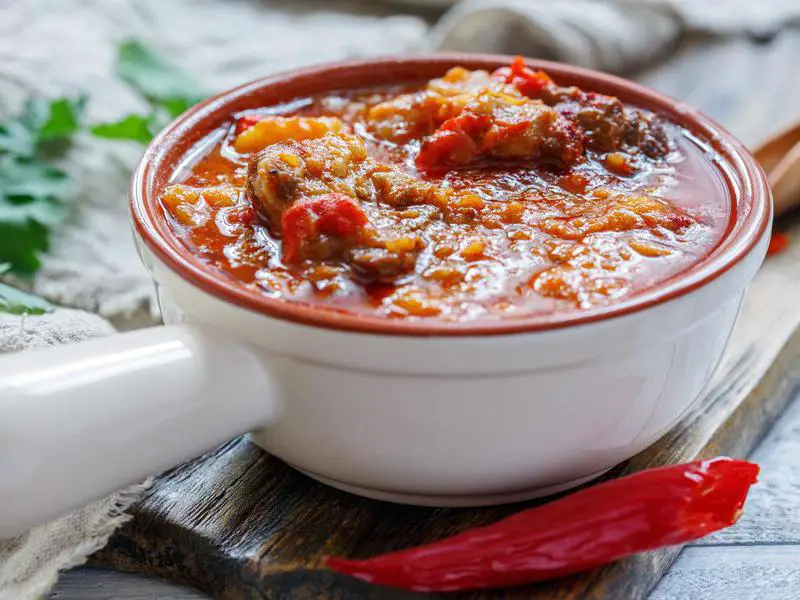
Dating back to medieval times in Hungary, this meat stew features spices and seasoning — most prominently paprika — often mixed with tomatoes, garlic, carrots, potatoes and beef. A particularly savory version is "kettle goulash," made by frying beef or mutton with onions in lard.
The dish is so popular in Hungary that it was once applied to a national political ideology. “Goulash Communism,” a form of communism that arose in the mid-20th century, was so named because, like the food dish, it represented a mix of unlikely ingredients.
Iceland – Skyr

Iceland’s iconic “yogurt” product is a bid misleading. Although it resembles yogurt, tastes like yogurt and is commonly referred to as yogurt, it’s technically a cheese.
Regardless, skyr is creamy, mild and the perfect breakfast (or dessert!) choice when traveling in Iceland.
Ireland – Irish Stew
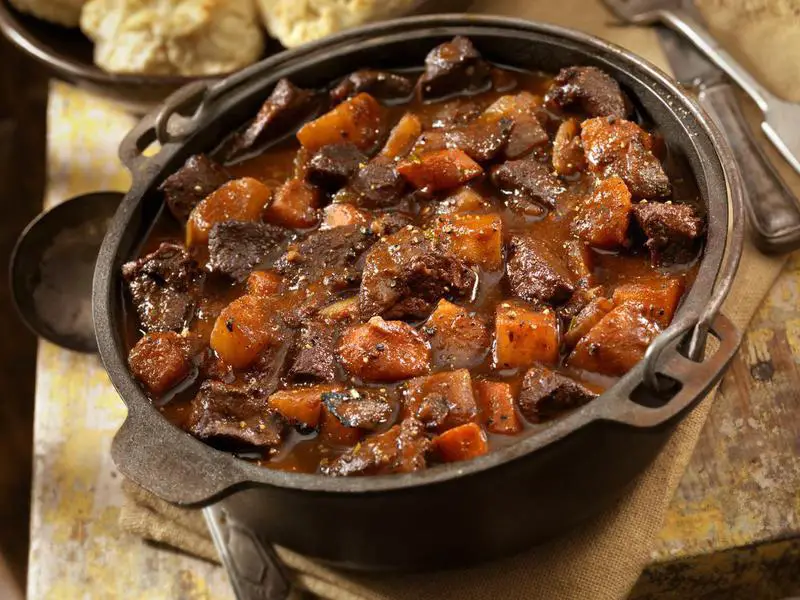
Ireland has a reputation for serving little more than potatoes, but it is actually home to a wonderful assortment of distinctive dishes. Case in point: hearty Irish stew, featuring piles of tender meat mixed with ingredients like onions, parsley and (ok, yes) potatoes.
Traditionalists insist it isn't Irish stew if it isn't made with neck mutton, but the dish is sometimes served with beef, and there are even versions incorporating Ireland’s most iconic beverage: Guinness.
Interestingly, some historians believe the stew was actually originally made with goat.
Italy – Pizza
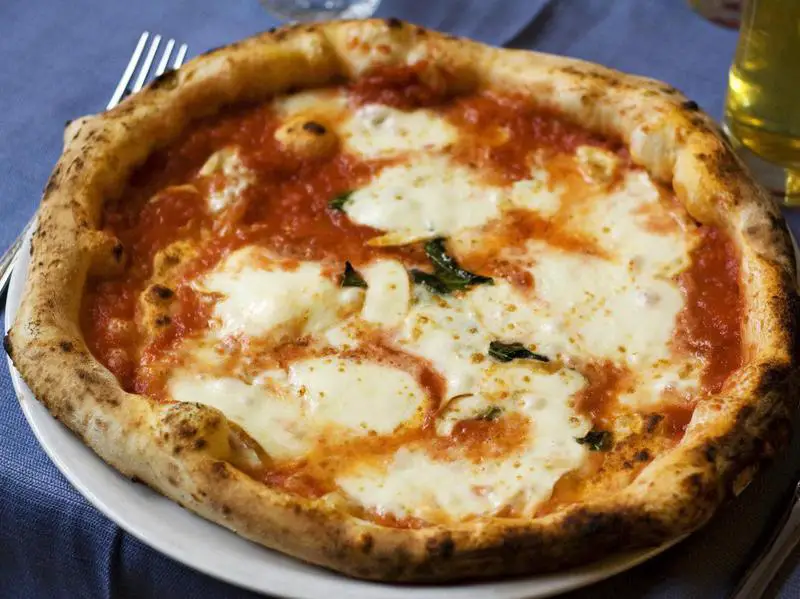
Pizza-like flatbreads have been eaten since the neolithic age, but pizza as we know it today is proudly Italian.
Legend has it that in 1889, a Neopolitan pizzamaker cooked up a pizza to honor Queen Margherita of Savoy, garnishing it with tomatoes, mozzarella and basil to represent the colors of the Italian flag. The result? Margherita pizza, still an Italian favorite.
One of the world's most adamantly food-oriented countries, Italy is home to a host of other iconic dishes as well. Bottarga, sometimes called "Sicilian caviar," is a pasta served with salted, dried roe with its roots in Southern Italy.
Outside the realm of pizza and pasta, favorites include ribollita, a generous vegetable soup thickened with bread, and two kinds of truffles: the black truffle and rarer white truffle.
Latvia – Grey Peas

This hearty dish is made from dried peas (similar to chickpeas) cooked with onions and fatty smoked bacon, and is a traditional Christmas dish in Latvia.
Per local lore, the peas represent prosperity and vitality (so eat up!).
Lithuania – Cepelinai
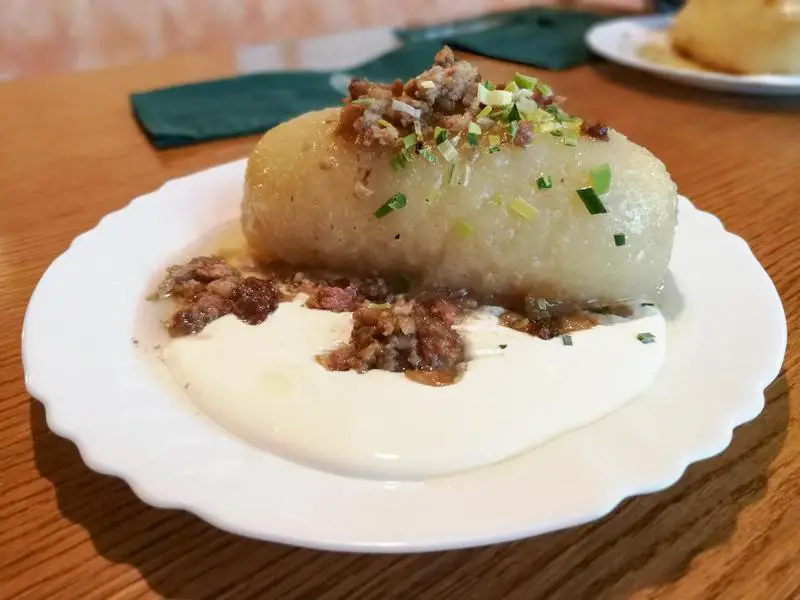
Cepelinai — a large oval dumpling made with potatoes and fillings such as ground meat, mushrooms or curd — boasts a distinctive oval shape. Indeed, it was named after a Zeppelin airship of the same name, due to its physical similarity to the vessel.
Note that the dish is not for the faint of heart: already hearty, it is served with sour cream and fried bacon or pork rinds.
Luxembourg – Smoked Pork with Beans

Go to Luxembourg and you’ll find smoked collar of pork with broad beans, otherwise known as "Judd mat Gaardebounen," nearly everywhere.
Luxembourgers typically enjoy it with boiled potatoes fried in bacon, and pair it with a local beer or a dry white Luxembourg wine.
Malta – Rabbit Stew
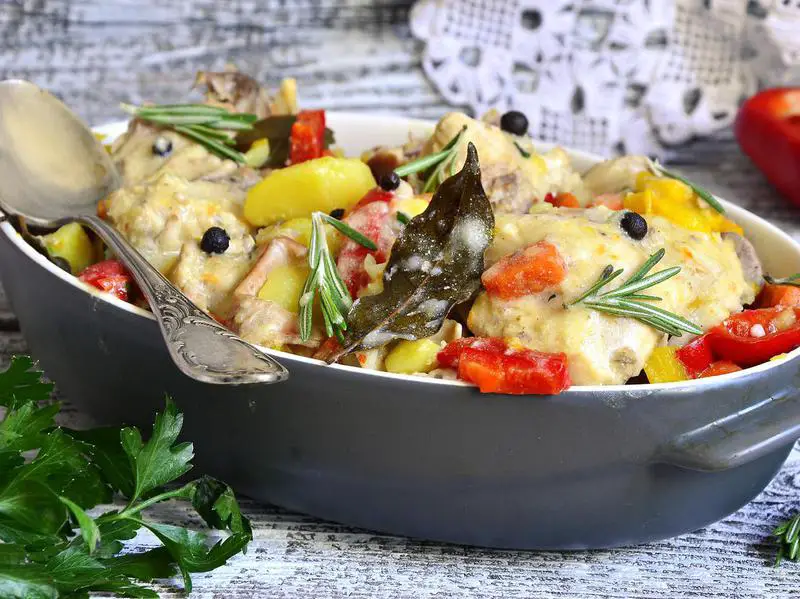
Traditional Maltese rabbit stew, or "Stuffat tal-Fenek," has been served in the Maltese Islands since the 11th century.
These days, the Maltese people like to serve the stew communally, often cooking a batch that utilizes two or even three rabbits.
Netherlands – Stroopwafel

Netherlands’ waffle is quite different from Belgium’s soft and airy variety. Thin and crunchy instead, like a wafer cookie, the stroopwafel is filled with syrup that comes in all kinds of sticky-sweet flavors, from caramel and honey to wild berry and chocolate.
The treat originated in the city of Gouda (also known for its namesake cheese) and is often served on top of a mug of tea, to warm it up before eating.
Poland – Pierogi

Pierogies from Poland are semicircular noodle dough dumplings often filled with fresh quark, boiled and minced potatoes, and fried onions. They can also be stuffed with sauerkraut, ground meat, cheese and fruits.
Head to Krakow in the summer for the annual Pierogi Festival, during which tens of thousands of the dumplings are ritually devoured.
Portugal – Pasteis de Nata
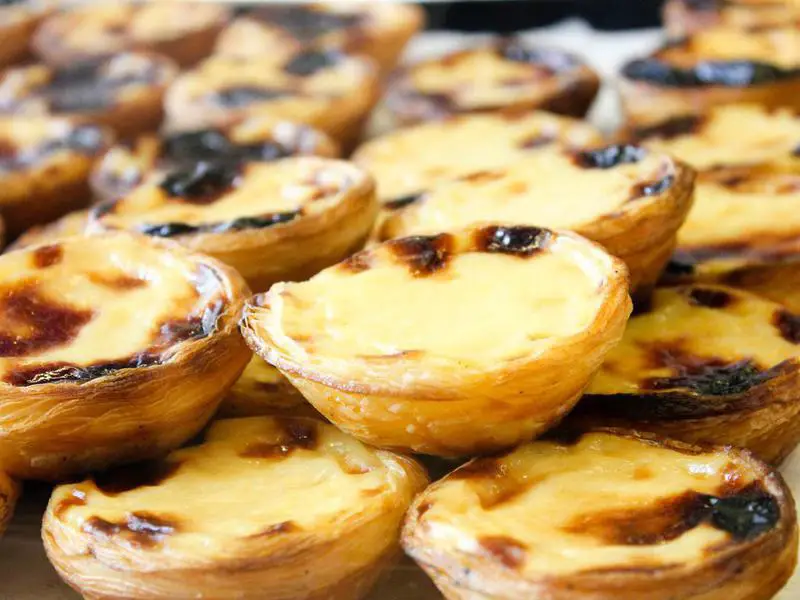
Can you even say you’ve experienced Portugal if you haven’t eaten pastéis de nata? We can’t say for sure.
These custard-filled sweet pastries were originally made by Catholic monks at the Jerónimos Monastery in Lisbon. In the 1800s, times got hard and the monks started making and selling them to bring in revenue.
The rest, as they say, is history.
Romania – Cabbage Rolls
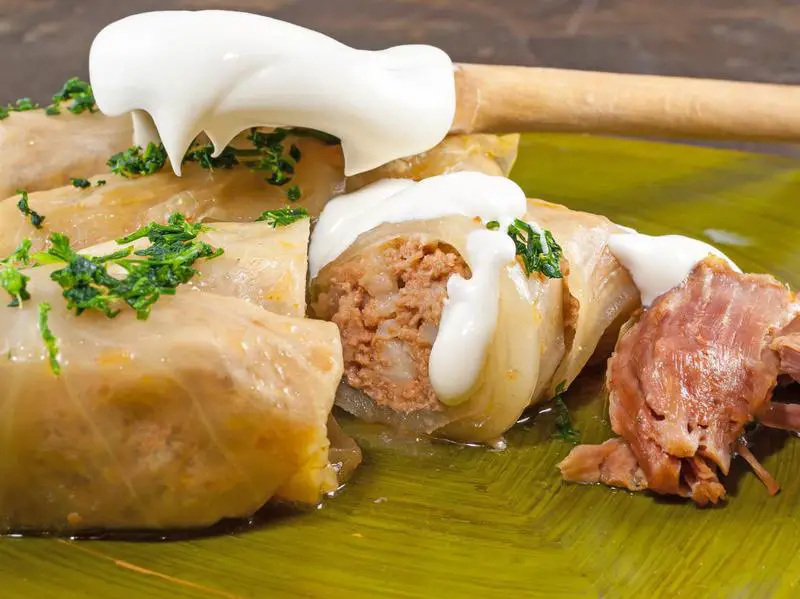
Called "sarmale" in Romania, these rolls are made of minced meat with rice and spices, rolled into fermented cabbage leaves, and boiled for hours in a special sauce that flavors and tenderizes the meat.
Slovakia – Potato Dumplings

Difficult to pronounce, "Bryndzové Halušky" is one of the most popular national dishes of Slovakia. The potato-dough dumplings (halušky) are filled with with sheep cheese (bryndza) and sprinkled with bacon or sausage on top.
Feeling hungry? An annual potato-dumpling festival in Turecka features a competition to see who can eat the most.
Slovenia – Giant Cheese Dumplings

"Struklj" dumplings are pinwheel rolls of wheat or buckwheat dough filled with various types of cheese filling. They can be sweet (with cottage cheese and walnut) or salty (with tarragon or savory cheese) and are a complete main course in and of themselves.
They’re traditionally served with a topping of buttery breadcrumbs, and can be pared down in size and served as a side dish.
Spain – Paella
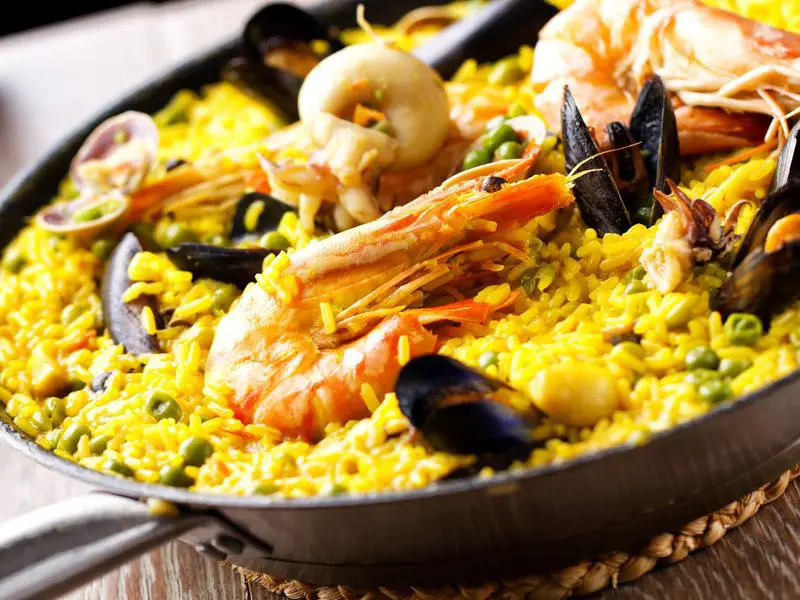
Paella, a hearty rice-based dish, is a must-order when in Spain. It comes in a variety of styles, including vegetable, meat, seafood or mixed (featuring a combination of ingredients) and is most closely associated with Valencia, a port city on the east coast of Spain. It is believed to have derived its name from the Latin word "patella," meaning "pan."
The dish is one many ordered tapas-style in Spain. Other sharing-ready favorites include croquettes, jamón ibérico de bellota (acorn-fed Iberian ham) and pan con tomate (Spanish tomato bread).
Sweden – Cinnamon Rolls

It’s no wonder the "kanelbullar," or cinnamon roll, is ubiquitous on the streets of Sweden. Baked with a hefty amount of cinnamon and topped off with crunchy sugar nibs, the pastry is an uber-sweet treat.
The rolls are often enjoyed by locals during "fika," mandatory work breaks designed to promote eating, drinking and relaxing.
Switzerland – Fondue

Swiss cheese is the first Swiss food that may come to mind, but Switzerland has much more to offer when it comes to cheese.
Fondue, a pot of creamy, melted cheese for dipping breads and meats, was designated a national dish in Switzerland by the Swiss Cheese Union in the '30s in order to increase cheese consumption. Today, it's a symbol of Swiss unity, and a favorite among the country's citizens.
United Kingdom – Fish & Chips

Tell a Brit to head down to the "chippy" and they'll immediately know where to go. Nothing says Britain more than a parcel of fish & chips, wrapped in paper and served with salt and vinegar.
You can find the dish all over the country, from street corners to Michelin-starred restaurants. Poppie’s Fish & Chips in London is among the most famous for its classic cod and haddock versions.